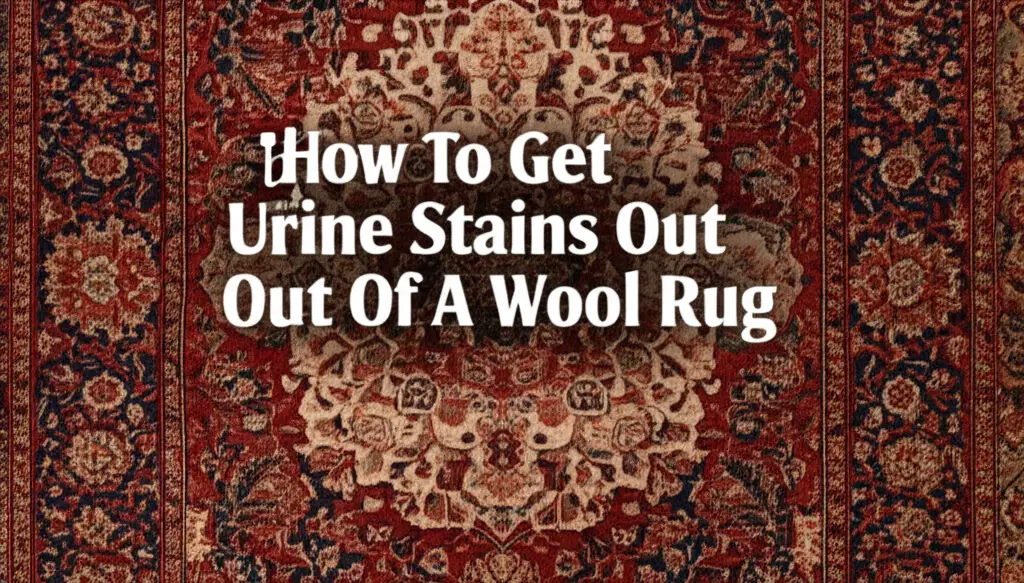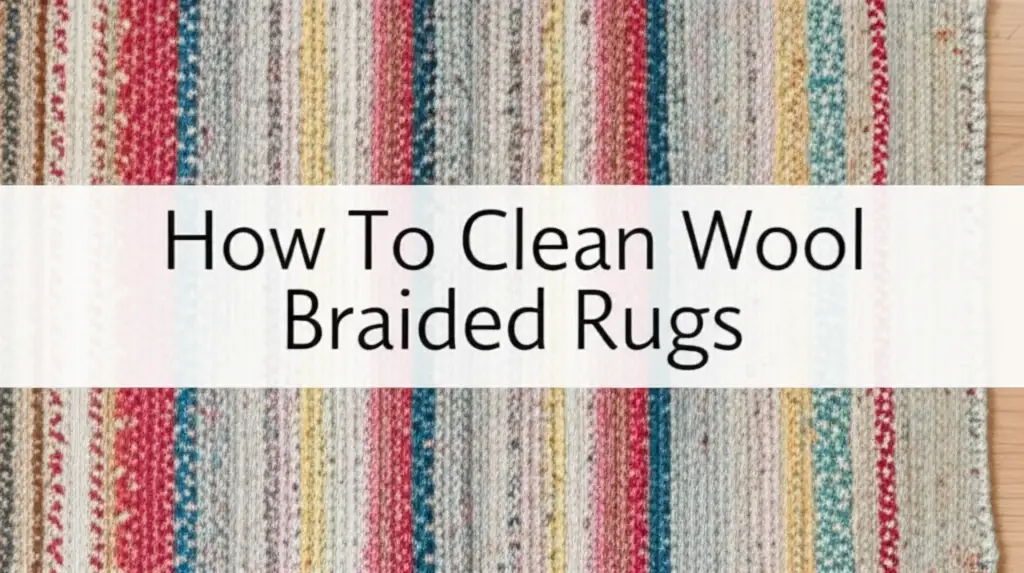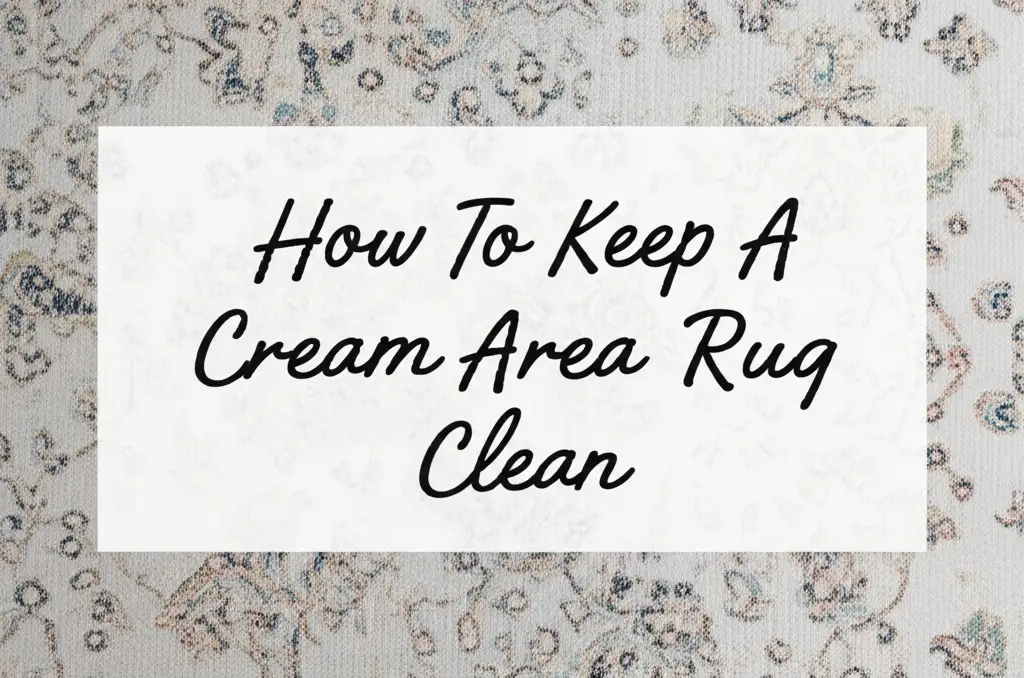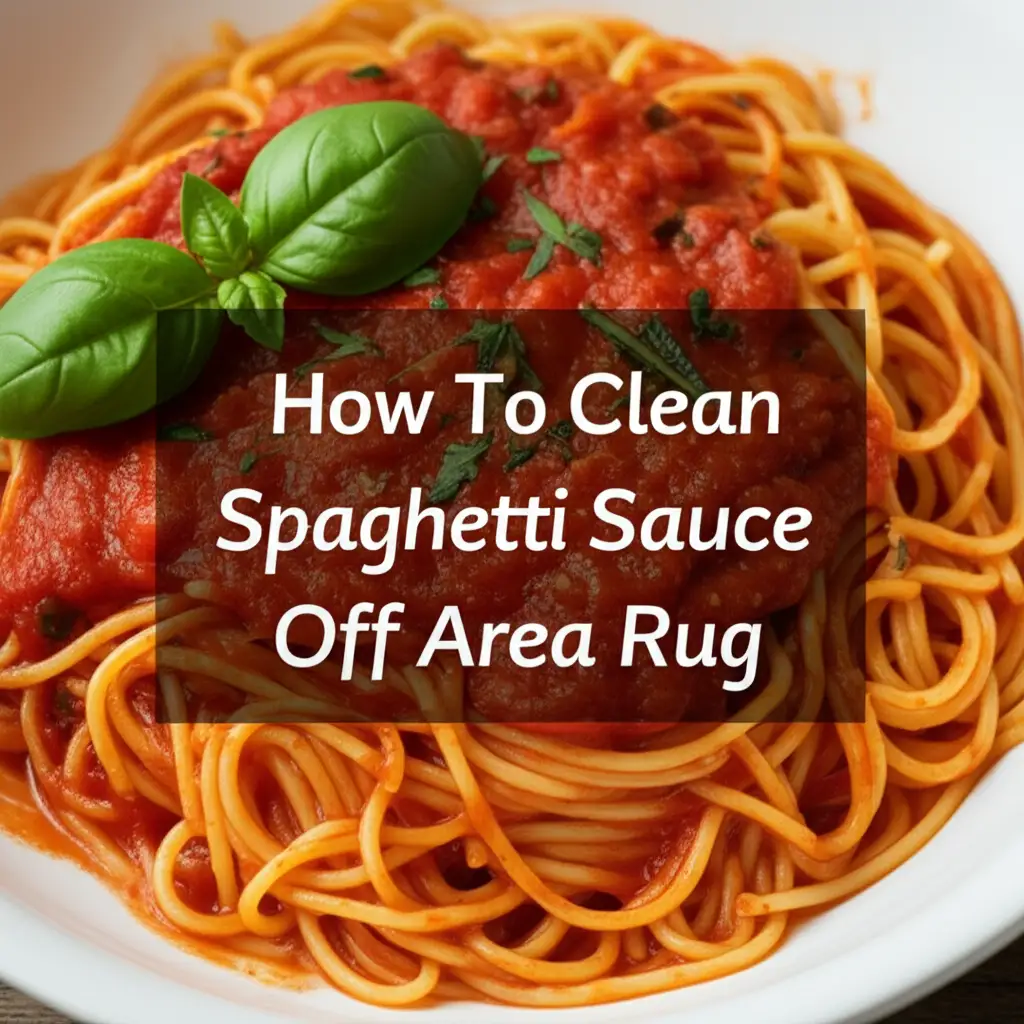· Tessa Winslow · Rug Care · 16 min read
What Not To Used On An Oriental Area Rugs
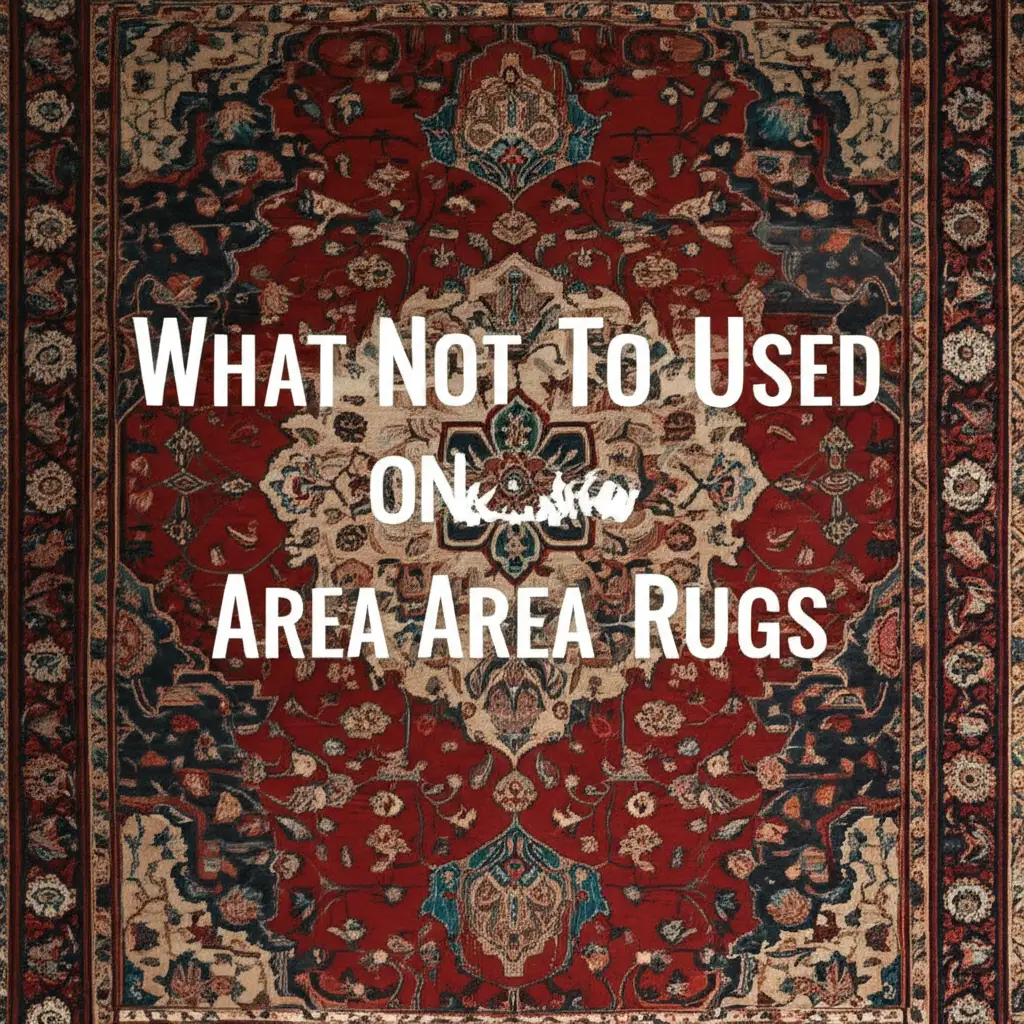
Protect Your Investment: What Not To Use On Oriental Area Rugs
Oriental area rugs are more than just floor coverings. They are often beautiful works of art, handcrafted with care and history. These rugs can last for generations with proper care. However, improper cleaning can cause irreversible damage. Many common cleaning products and methods are harmful to these delicate pieces. Understanding what not to used on an Oriental area rugs is crucial for their preservation. This guide will help you avoid costly mistakes and keep your rug looking its best.
Takeaway:
- Avoid harsh chemicals like bleach or ammonia.
- Do not use steam cleaners or excessive water.
- Skip standard carpet shampoos and detergents.
- Never use stiff brushes or aggressive scrubbing.
- Be cautious with untested home remedies.
- Keep vacuum cleaner beater bars away from the rug.
- Do not use generic stain removers without a patch test.
When cleaning Oriental area rugs, never use harsh chemical cleaners, steam machines, or standard carpet shampoos. These products and methods can damage the delicate fibers, cause colors to bleed or fade, and leave behind harmful residues. Instead, opt for gentle, pH-neutral cleaners designed specifically for wool or silk rugs, and always use minimal moisture.
Harsh Chemical Cleaners: A Recipe for Disaster
Using harsh chemical cleaners on your Oriental area rug is a serious mistake. These products are simply too strong for delicate rug fibers. They can cause immediate and long-term damage. I always advise against them because the risks outweigh any perceived benefits.
Many common household cleaners contain powerful agents. These agents can strip natural oils from wool and silk fibers. This makes the fibers brittle and prone to breakage. The rug’s lifespan shortens considerably. I have seen many rugs permanently damaged by these chemicals.
Bleach and Oxidizers
Bleach is one of the worst offenders for Oriental rugs. It is a powerful oxidizer. This means it removes color from dyes. Even a small amount of bleach can create permanent white spots on your rug. It also weakens the fibers at a chemical level.
Think of your rug’s dyes as fine paints. Bleach essentially erases these paints. This damage is irreversible. Oxidizers found in some “color-safe” bleaches can still harm natural fibers and dyes. They are not suitable for your precious rug.
Ammonia-Based Cleaners
Ammonia is another common ingredient in many household cleaners. It is excellent for grease and grime on hard surfaces. However, it is very alkaline. This high pH can be devastating to natural fibers like wool and silk. Wool fibers are protein-based, similar to human hair. Ammonia can cause these proteins to break down.
It can also strip the natural lanolin from wool. Lanolin protects wool fibers and gives them their resilience. Without it, the fibers become dry and dull. Ammonia can also react with certain dyes, causing them to bleed or change color.
Strong pH Cleaners
The pH scale measures how acidic or alkaline a substance is. Oriental rugs, especially wool and silk ones, prefer a neutral or slightly acidic pH. Strong alkaline cleaners (high pH) or strong acidic cleaners (low pH) can both cause damage. High pH cleaners like ammonia-based products can dissolve natural fibers and dyes. Low pH cleaners might corrode fibers over time or react poorly with specific dyes.
Always choose pH-neutral cleaners specifically formulated for delicate rugs. This ensures the fibers and dyes remain stable. It preserves the integrity of your beautiful rug.
Steam Cleaners and Excessive Moisture: The Silent Destroyers
Steam cleaners might seem like a good idea for deep cleaning. They use hot water vapor to clean surfaces. However, they are a silent destroyer for Oriental area rugs. Excessive moisture and high heat are enemies of these precious textiles. I always tell people to avoid them at all costs.
Many Oriental rugs are made from wool, cotton, or silk. These natural fibers are very absorbent. They react poorly to being overly wet. High heat from steam also poses a significant risk. Using a steam cleaner can cause more problems than it solves. This is why professional cleaners avoid such methods. If you are curious about general rug cleaning, you can learn more about how to clean area rugs inside, but remember Oriental rugs require special care.
High Heat Concerns
Steam cleaners operate at very high temperatures. This heat can be damaging to the delicate dyes in your rug. Heat can cause colors to bleed together. A red dye might run into a white section, creating permanent pink stains. This color bleeding is often irreversible. The heat can also cause the natural fibers to shrink. A shrunken rug will look distorted and might not lay flat anymore. It can also damage the foundation threads.
The high heat can also set stains. Instead of lifting a stain, the heat can bond the stain to the fibers permanently. This makes it much harder, if not impossible, to remove later. This is a common issue I see with DIY cleaning attempts.
Prolonged Dampness and Mildew
Oriental rugs are constructed with a foundation, typically cotton or wool. If this foundation gets too wet and does not dry quickly, serious problems arise. Excessive moisture creates a perfect breeding ground for mold and mildew. Mold and mildew grow rapidly in damp, dark conditions.
Once mold takes hold, it can cause a musty odor that is hard to remove. It also weakens the rug’s fibers and can cause them to rot. This leads to irreparable damage to the rug’s structure. In severe cases, the rug can even disintegrate. Proper drying is crucial after any moisture exposure. This is why professional cleaners have specialized drying rooms.
Standard Carpet Shampoos and Detergents: Not All Cleaners Are Equal
Many people think all rug cleaners are the same. This is simply not true. Standard carpet shampoos and detergents are designed for synthetic wall-to-wall carpets. These products are often too harsh for the natural fibers and delicate dyes found in Oriental area rugs. I strongly advise against using them. They can cause more harm than good to your valuable rug.
Understanding the difference in materials is key. Your wall-to-wall carpet might be nylon or polyester. Oriental rugs are typically wool, silk, or cotton. These materials have very different cleaning needs. Using the wrong product can lead to permanent damage and disappointment.
Residue Build-up
One major problem with standard carpet shampoos is the residue they leave behind. These shampoos are often formulated to create a lot of foam. This foam helps lift dirt. However, it is very difficult to rinse completely from dense rug piles. The soapy residue gets trapped deep within the fibers.
This sticky residue acts like a magnet for new dirt. Your rug will get dirty much faster after cleaning. It will also feel stiff and dull. This leads to a cycle of needing to clean the rug more frequently. Each cleaning adds more residue, making the problem worse over time. Professional cleaning for specific rug types, like how you clean an area wool rug, focuses on residue-free cleaning.
Optical Brighteners and Dyes
Many commercial carpet shampoos contain optical brighteners. These are chemicals that absorb ultraviolet light and re-emit it as visible blue light. This makes white areas appear brighter. While this might be desirable for some synthetic carpets, it is terrible for Oriental rugs.
Optical brighteners can change the natural colors of your rug. They can make whites appear unnaturally blue or yellow. They can also interact with the natural dyes, causing them to fade or become dull over time. Some shampoos also contain dyes themselves. These dyes can transfer to your rug’s fibers. This can permanently alter its original color scheme. Using a shampooer on an area rug, especially an Oriental one, often introduces these issues, which is why I advise against it. You can learn more about can you use a shampooer on an area rug to understand its limitations for delicate pieces.
Stiff Brushes and Aggressive Scrubbing: Abrasive Actions
When cleaning an Oriental rug, gentleness is paramount. Using stiff brushes or aggressive scrubbing techniques is a common mistake. These methods might seem effective for tough stains. However, they can cause serious and permanent damage to the rug’s delicate fibers and structure. I always recommend a very light touch.
Oriental rugs are often hand-knotted. Their fibers are spun and dyed with care. Harsh scrubbing can undo years of craftsmanship in moments. This kind of physical damage is often impossible to repair fully.
Damaging Delicate Fibers
The pile of an Oriental rug is made of thousands of individual fibers. These fibers, often wool or silk, are strong but can be damaged by abrasion. Stiff brushes, like those with hard plastic bristles, can abrade the surface of the fibers. This makes them fuzzy and dull. It also weakens the individual strands.
Repeated scrubbing can break the fibers completely. This leads to thinning areas on the rug. It can also cause visible wear patterns that detract from the rug’s beauty. Even a household scrub brush can be too rough. Always use a soft cloth or a very soft-bristled brush specifically designed for delicate textiles.
Untwisting and Fraying
Many rug fibers are spun or twisted together to create strong yarns. Aggressive scrubbing can untwist these yarns. This makes the fibers loose and prone to fraying. You might see small, loose fibers appearing on the surface of your rug. This is a sign of damage.
Fraying can progress quickly if the scrubbing continues. It can lead to the visible deterioration of the rug’s pile. This kind of damage is not just cosmetic. It weakens the rug’s overall structure. It can also impact the value of the rug over time. For specific stain issues, like how to clean an Oriental rug cat urine, gentle blotting is always the recommended method, not scrubbing.
Home Remedies Without Proper Knowledge: The Risky Business
Many home remedies circulate online and among friends. Some involve common household items like vinegar or dish soap. While these might work for some cleaning tasks, they are often risky for Oriental area rugs. Using them without proper knowledge of your rug’s specific materials and dyes can lead to irreversible damage. I caution against experimenting.
Every Oriental rug is unique. Its dyes, fibers, and construction can react differently to various substances. What works for one rug might ruin another. It is a risky business to try untested solutions.
Uncontrolled Dilution of Vinegar
Vinegar is a popular natural cleaner. It is acidic, which can be useful for certain tasks. However, its acidity can be too strong for some rug dyes and fibers. Many people use vinegar without proper dilution or understanding its effects. Too much acidity can cause dyes to bleed or fade. It can also make wool fibers feel rough or brittle.
While vinegar has its uses, such as in dishwashers as explored in can vinegar be used in dishwasher, its application on delicate rugs requires extreme caution and expertise. Incorrectly applied vinegar can leave a lingering odor. It can also attract dirt once it dries on the rug. Always test any solution, even diluted vinegar, in an inconspicuous area first.
Dish Soap Mishaps
Dish soap is another common home remedy. It is great for cutting grease on dishes. However, it can be problematic for Oriental rugs. Most dish soaps are formulated to be very alkaline. As we discussed, high pH can damage wool and silk fibers. They can also strip natural oils from the fibers, making them dull.
Furthermore, dish soap creates a lot of suds. These suds are very difficult to rinse out completely from a dense rug pile. The leftover soap residue attracts dirt. This causes the rug to get dirty faster after cleaning. It also makes the rug feel stiff and unpleasant to the touch. This sticky residue can also lead to faster re-soiling.
Non-Specialized Vacuum Cleaner Attachments: Beyond Surface Cleaning
Regular vacuuming is a good way to maintain your Oriental rug. It removes loose dirt and dust. However, the type of vacuum and its attachments matter greatly. Using non-specialized vacuum cleaner attachments can harm your rug. I always advise caution here.
The wrong vacuum technique can wear down the rug’s pile. It can also damage the delicate fringes. It is important to know which parts of your vacuum to avoid. This prevents accidental damage during routine cleaning.
Beater Bar Dangers
Many upright vacuums have a rotating brush, or “beater bar,” at the bottom. This bar spins rapidly, agitating the carpet fibers. It is effective for lifting dirt from wall-to-wall carpets. However, it is extremely damaging to Oriental rugs. The stiff bristles of the beater bar can pull, snag, and break the delicate wool or silk fibers.
This leads to excessive shedding and thinning of the rug’s pile. It can also unravel the knots that form the rug’s pattern. The beater bar can also snag the fringes, causing them to fray or tear. Always lift the beater bar or turn it off when vacuuming an Oriental rug. Use a suction-only attachment instead.
Incorrect Suction Settings
Some vacuums have adjustable suction settings. Using too high a suction setting can also be problematic for Oriental rugs. High suction can pull too hard on the rug’s fibers and foundation. This can stretch the rug or put undue stress on its structure. It can also damage the fringe if it gets caught.
I recommend using a low to medium suction setting. This allows for effective dirt removal without stressing the rug. It is best to use a vacuum with a smooth nozzle attachment. Gently vacuum in the direction of the pile. This helps protect the fibers and keeps the rug looking neat. For general guidance on how to clean area rugs inside, always adapt the methods for Oriental rugs.
Untested Stain Removers: A Permanent Regret
A fresh spill on an Oriental rug can cause panic. The immediate instinct is to grab the nearest stain remover. However, this is one of the most common ways to permanently damage your rug. Most commercial stain removers are too harsh. They are not formulated for the unique dyes and fibers of Oriental rugs. Using an untested stain remover often leads to permanent regret.
Every stain is different. Every rug is different. What works for a coffee stain on a synthetic carpet might ruin a wool Oriental rug. I strongly advise against using generic stain removers. They can do more harm than good.
Color Fastness Issues
The dyes used in Oriental rugs are often natural or vegetable-based. These dyes can be very sensitive. Commercial stain removers often contain strong chemicals or solvents. These chemicals can cause the rug’s colors to bleed. A vibrant red might spread into a light cream area. This creates a permanent, unsightly stain. They can also cause colors to fade or bleach out completely.
Before using any product on your rug, even a recommended one, always perform a patch test. Apply a tiny amount to an inconspicuous area, like a corner underneath the rug. Wait a few minutes. Blot it dry. Check for any color change or bleeding before proceeding. If you are dealing with tricky stains like pet accidents, specific guidance like how to clean an Oriental rug cat urine offers safe, gentle methods.
Setting Stains Further
Some stain removers, especially those with high heat or specific chemical reactions, can actually set a stain deeper into the fibers. Instead of lifting the stain, they chemically bond it to the rug. This makes the stain permanent. Once a stain is set, it becomes almost impossible for even professional cleaners to remove.
Different stains require different approaches. A protein stain (like blood or food) needs a different treatment than an oil-based stain. Using a general-purpose stain remover might react poorly with the specific stain chemistry. This can lead to a bigger, more permanent problem. My advice is always to blot spills immediately with a clean white cloth and call a professional.
FAQ Section
Can I use a regular carpet cleaner on my Oriental rug?
No, I strongly advise against using a regular carpet cleaner on your Oriental rug. These cleaners contain harsh chemicals and detergents. They are designed for synthetic carpets. They can damage delicate natural fibers like wool and silk. They can also cause colors to bleed or fade. The residue they leave behind attracts more dirt.
Why can’t I steam clean my Oriental rug?
You should not steam clean an Oriental rug due to excessive moisture and heat. Natural fibers in these rugs absorb water, leading to prolonged dampness. This creates ideal conditions for mold and mildew growth. High heat from steam can also cause dyes to bleed and fibers to shrink, permanently damaging the rug’s structure and appearance.
What happens if I use bleach on my Oriental rug?
Using bleach on an Oriental rug will cause irreversible damage. Bleach is a powerful oxidizer that removes color. It will create permanent white or discolored spots where applied. Bleach also significantly weakens the rug’s natural fibers. This makes them brittle and prone to breakage. The rug’s integrity and value will be compromised.
Is dish soap safe for Oriental rugs?
Dish soap is generally not safe for Oriental rugs. Most dish soaps are alkaline and can strip natural oils from wool fibers. They also create excessive suds. These suds are very difficult to rinse out completely. The sticky residue left behind will attract new dirt and leave your rug feeling stiff and dull.
How should I remove a stain from an Oriental rug safely?
To remove a stain safely, act quickly. Blot the spill immediately with a clean, white cloth. Do not rub. If it’s a fresh spill, use a small amount of plain water and blot. For more stubborn stains, or if you are unsure, it is best to consult a professional rug cleaner. Avoid commercial stain removers without a patch test.
Can I vacuum my Oriental rug with a beater bar?
No, you should never vacuum your Oriental rug with a beater bar. The rotating bristles of a beater bar are too aggressive. They can snag, pull, and break the delicate fibers and knots of your rug. This leads to excessive shedding, thinning, and permanent damage to the pile and fringe. Always use a suction-only attachment or lift the beater bar.
Conclusion
Caring for your Oriental area rugs means understanding what not to used on an Oriental area rugs. These beautiful pieces are investments, often holding significant monetary and sentimental value. Avoiding common cleaning mistakes is the best way to ensure their longevity. I hope this guide helps you protect your precious rugs.
Remember, harsh chemical cleaners, steam machines, and aggressive scrubbing tools are your rug’s worst enemies. They can cause irreversible damage to fibers and dyes. Standard carpet shampoos and untested home remedies also pose significant risks. Always choose gentle, pH-neutral solutions specifically designed for natural fibers.
Proper maintenance, like gentle vacuuming and immediate, careful blotting of spills, goes a long way. However, for deep cleaning or stubborn stains, I always recommend seeking professional help. Expert rug cleaners have the knowledge, tools, and experience to clean your Oriental rug safely and effectively. They ensure its beauty and integrity are preserved for generations to come. Trust the experts to protect your valuable heritage.


